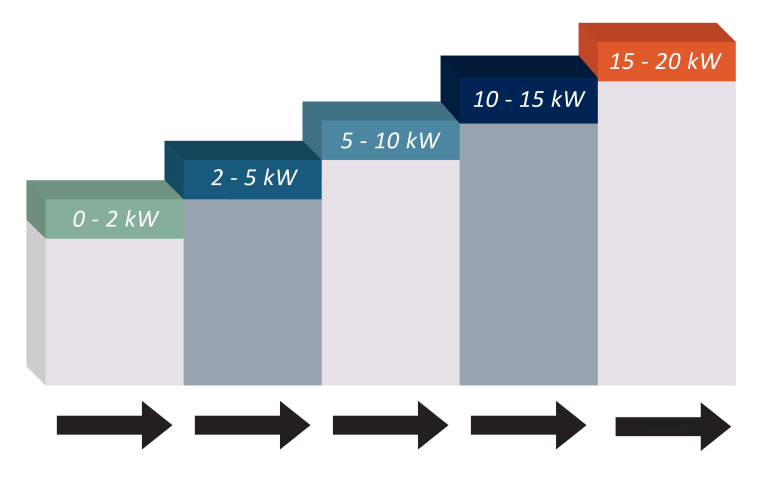New network tariffs from 2022
Government authorities have decided to introduce a new tariff for electricity customers in Norway as from July 1, 2022. The purpose is for consumption to become more evenly distributed throughout the day and thus make more effective use of the electrical grid.
The change entails a reallocation of costs from customers with a low and evenly distributed consumption to those who impose the heaviest peak loads. Customers who distribute the load by not using all electrical appliances at the same time, will be able to save money.
The electrical grid needs to have enough capacity to support consumption when consumption is at its highest. It is very costly to expand network capacity beyond what is strictly needed. Smarter use of the electrical grid and more even consumption throughout the day will reduce the need for investments in electrical grid. That will help to keep network tariffs as low as possible, in addition to being good for the environment.
Introduction of new price model
All customers with a consumption below 100 000 kWh in one year, will be subject to new network tariffs as from 2022. In most cases, the tariffs will become slightly lower or remain unchanged. With the new tariffs, you will, to a greater degree than before, be able to influence the price you pay.
The new network tariff will include a capacity element based on the highest consumption peak that month, i.e. concurrent power consumption (in kilowatt) per hour. The capacity element is organised in steps. Most private customers will find themselves at steps 1, 2 or 3 of the capacity element, i.e. 0–2, 2-5 or 5–10 kW.

You will pay less for the consumption-based element during the night (between 22.00 and 06.00) than during the day. The electricity fee, which is collected together with the network tariff, will not be affected by the tariff changes.
You can find information about your concurrent power consumption (in kW) by logging in to MinSide (MyPage) and clicking ‘Effektkurver’ (Power consumption curves).
Do not turn everything on at the same time
Analyses have shown that, for most customers, the network tariff will become slightly lower or remain unchanged. The tariff will become higher for customers who have a high concurrent consumption, unless they make changes and distribute their consumption more evenly throughout the day.
Home chargers for electric cars often have a high concurrent power consumption, but the charging rate can in many cases be lowered so that power consumption is reduced.
It is not recommended to use washing machines, tumble driers or dishwashers etc. during the night, however. Nor is it recommended to charge mobile phones or batteries for electric bikes or scooters etc. during the night. If you have a home charger, you may consider charging your car overnight.